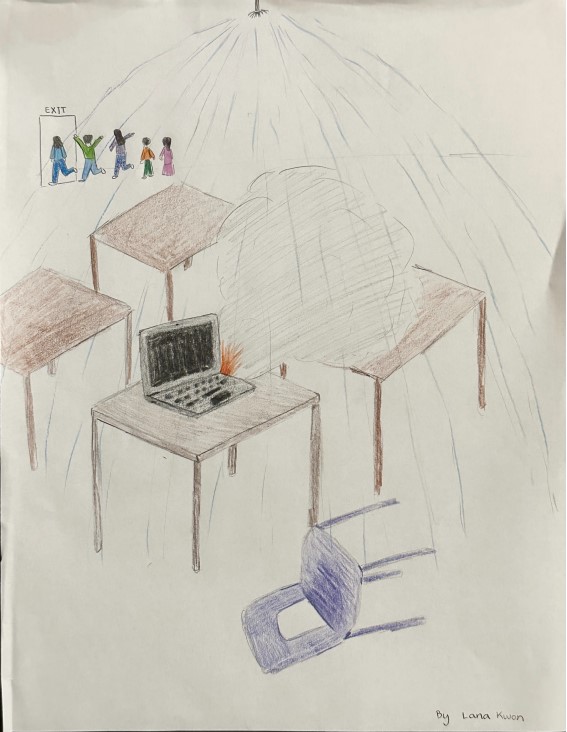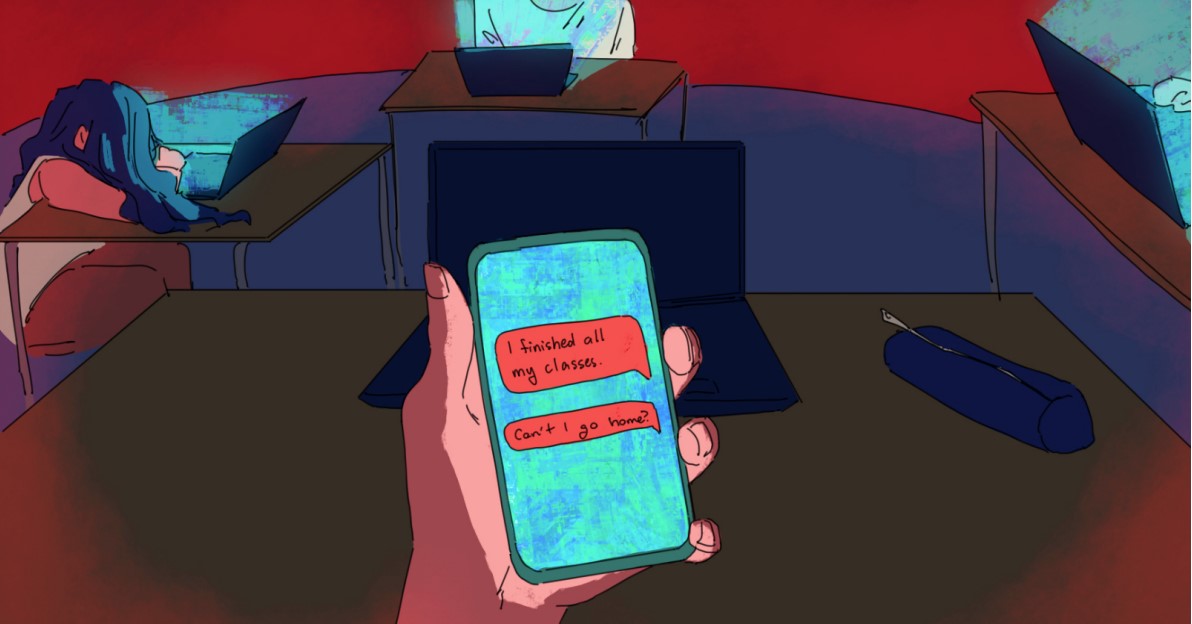The Chromebook Challenge trend has become extremely popular among students lately. Teens are trying to see how much their Chromebooks can handle by testing them in different and sometimes crazy ways. Some think it’s a fun way to showcase the coolness and strength of these devices, while others worry it might cause people to damage their Chromebooks or use them incorrectly. This trend prompts us to consider how we should utilize technology in school and what is safe when it comes to our devices.
The challenge involves students intentionally inserting metal objects such as lead, paper clips, and more to damage the lithium-ion battery inside the Chromebook’s charging port.
According to an article called, “ What is the Chromebook Challenge? The trend that has students destroying school laptops”, “As a result of the challenge, laptops often release substances like
hydrogen fluoride or other acidic vapors, which the DFPC said are just as harmful and hazardous as the fires, possibly leading to symptoms including: headaches, dizziness, confusion, loss of consciousness,[and] potential damage to liver, kidneys and central nervous system.”
Doing this insanely dangerous act can lead to the short-circuiting of the Chromebook, overheating, smoke, and, more recently, fires.
WCBV 5 ABC, in an article called “Get the Facts: What is the TikTok trend sparking Chromebook fires in schools,” states, “Students at several districts where Chromebook fires have occurred have been evacuated from their classrooms or school buildings after fire alarms were triggered.”
Woodbridge High’s vice principal, Calvin McDonald, says, “[The Chromebook challenge] is very dangerous. There’s a safety concern, especially…if students [are] doing it in the classroom, there’s a safety concern. And there’s also the piece where it’s a financial concern. Students need to be held accountable as far as like financial or replacing that device.”
This trend needs to stop. It has gotten to the point where it actually threatens people’s safety and financial status, yet kids continue to do it.
Some people don’t see this as an issue because they believe that this trend is no different from others and is meant to build a sense of belonging within teenagers. Generally, social media trends can have that effect by connecting a group of like-minded young people and boosting a feeling of connectedness when that matters most.
This view is backed, for trends in general, by the national committee for the Mental Health of America, being cited as saying, “As young people start to become aware of feelings of belonging, they typically seek it out in friends and social groups—a big part of developing a sense of identity outside of their family.” While this is true, this trend is damaging and is actively harming the environment in which young people make their friends the most: school. When the environment is disrupted, it prevents people from making friends and also makes it challenging for people to communicate if, say, the school has to shut down because it caught on fire.
In addition, most schools try to lessen that disconnect between students and teachers, instead creating one whole school community. Teachers are more likely to look at students less favorably if
they are damaging school property and being a hazardous distraction in the classroom. The trend would not only harm students and school property, but it could also harm student relationships and teacher-student relationships. Due to this trend disrupting the students’ social life and schooling, this trend is not justified.
To address the rise in dangerous school property damage, especially fire-related incidents, stricter solutions must be enforced.
Under California Penal Code § 451 PC, arson is a felony punishable by up to 9 years in prison. Students who follow these harmful trends can face serious legal consequences.
In order to prevent this behavior, schools need to implement a multi-layered approach. First, educate students on the real dangers of tampering with electronic devices. Inserting metal objects into USB ports can cause short circuits, overheating, or even fires, putting everyone at risk. Second, enforce strict school policies that include heavy fines, suspension, expulsion, and even referral to law enforcement if necessary.
McDonald when asked about the possible solutions to stop this trend says, “I think, well, the consequence, definitely let the parents know that these students will be held financially responsible once they get to senior level, when all the seniors are checking out. That fine’s going to be assigned to their account, and they won’t be receiving a final signature from the library or whoever signs out the Chromebooks until that financial responsibility is taken care of.”
Clear consequences will discourage students from engaging in reckless behavior. Finally, schools should work with IT staff to block harmful social media trends on school devices and educate students about the dangers of blindly following viral content. Together, these steps can create a safer and more responsible school environment.
In conclusion, stopping the dangerous trend of students purposely putting metal objects into Chromebooks to start fires is really important. Schools need to watch students more closely and teach them why this is so risky and how it can hurt people and damage property. Schools can also give harsher punishments and consequences to those who cause harm to their peers through this trend. Using special covers on the charging ports or making it harder for objects to get stuck in USB spaces could help stop this from happening.
It’s also important for students, teachers, and parents to talk openly about why some students might do this and find better ways to handle those problems. By being careful, Warriors can keep everyone safe and prevent further danger.












